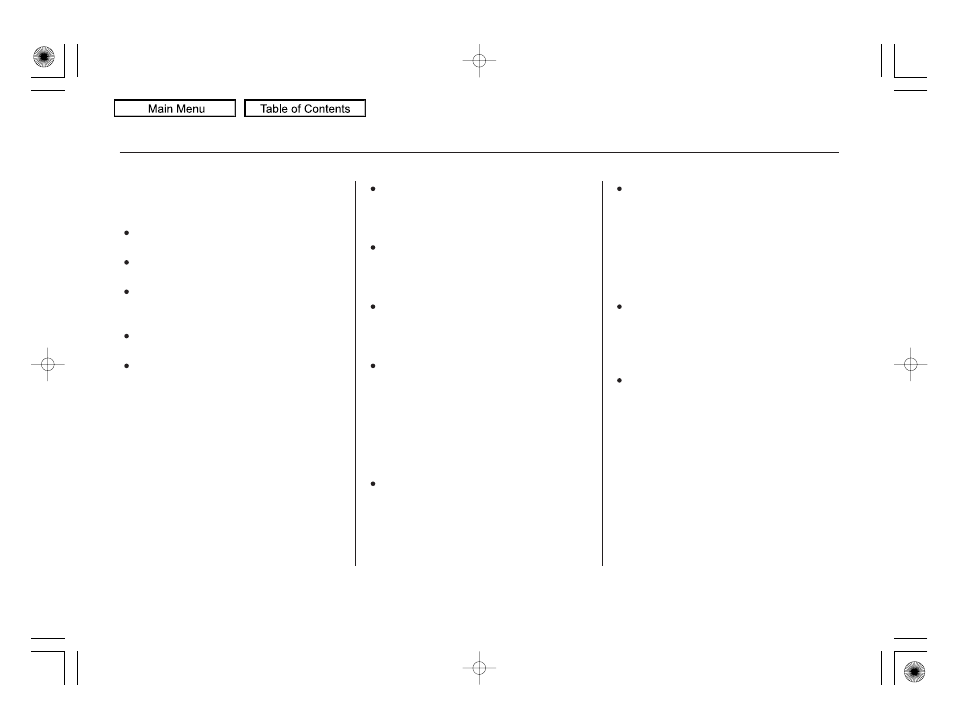Fuel economy – HONDA 2010 Civic Hybrid User Manual
Page 251

−
−
−
−
−
−
−
Aggressive driving (hard
acceleration and braking)
Excessive idling, accelerating and
braking in stop-and-go traffic
Cold engine operation (engines
are more efficient when warmed
up)
Driving with a heavy load or the
air conditioner running
Improperly inflated tires
An underinflated tire increases
‘‘rolling resistance,’’ which reduces
fuel economy.
It puts a heavier
load on the engine, increasing fuel
consumption.
In
particular, a build-up of snow or
mud on your vehicle’s underside
adds weight and rolling resistance.
Frequent cleaning helps your fuel
economy.
The following factors can lower your
vehicle’s fuel economy:
A properly maintained vehicle
maximizes fuel economy. Poor
maintenance can significantly reduce
fuel economy. Always maintain your
vehicle according to the maintenance
messages displayed on the multi-
information display (see
on page
).
For example:
If your vehicle has a
manual transmission, you can
boost your fuel economy by up
shifting as early as possible.
Rapid
acceleration, abrupt cornering,
and hard braking increase fuel
consumption.
Aerodynamic drag has a big effect
on fuel economy at speeds above
45 mph (75 km/h). Reduce your
speed and you reduce the drag.
Trailers, car top carriers, roof
racks and bike racks are also big
contributors to increased drag.
Idling
results in 0 miles per gallon (0 kms
per liter).
282
Fuel Economy Factors
Use the recommended viscosity
motor oil, displaying the API
Certif ication Seal (see page
).
Maintain proper tire inf lation
Avoid carrying excess weight in
your vehicle
Keep your vehicle clean
Improving Fuel Economy
Owner’s
Maintenance Checks
Always drive in the highest gear
possible
Drive moderately
Observe the speed limit
Avoid excessive idling
285
Drive Ef f iciently
Vehicle Maintenance
Fuel Economy
248
09/07/15 11:03:17 31SNC640_253
2010 Civic Hybrid